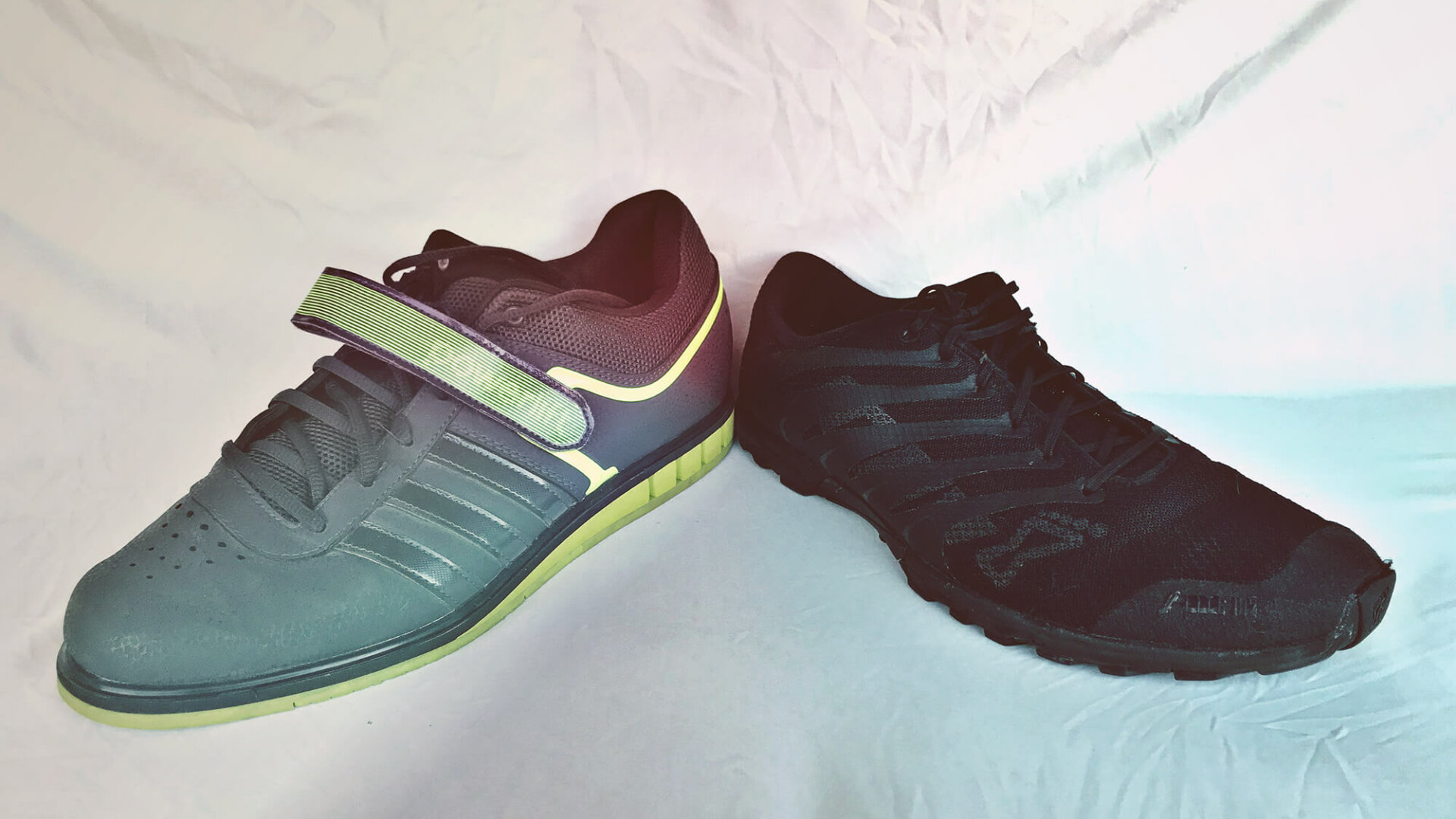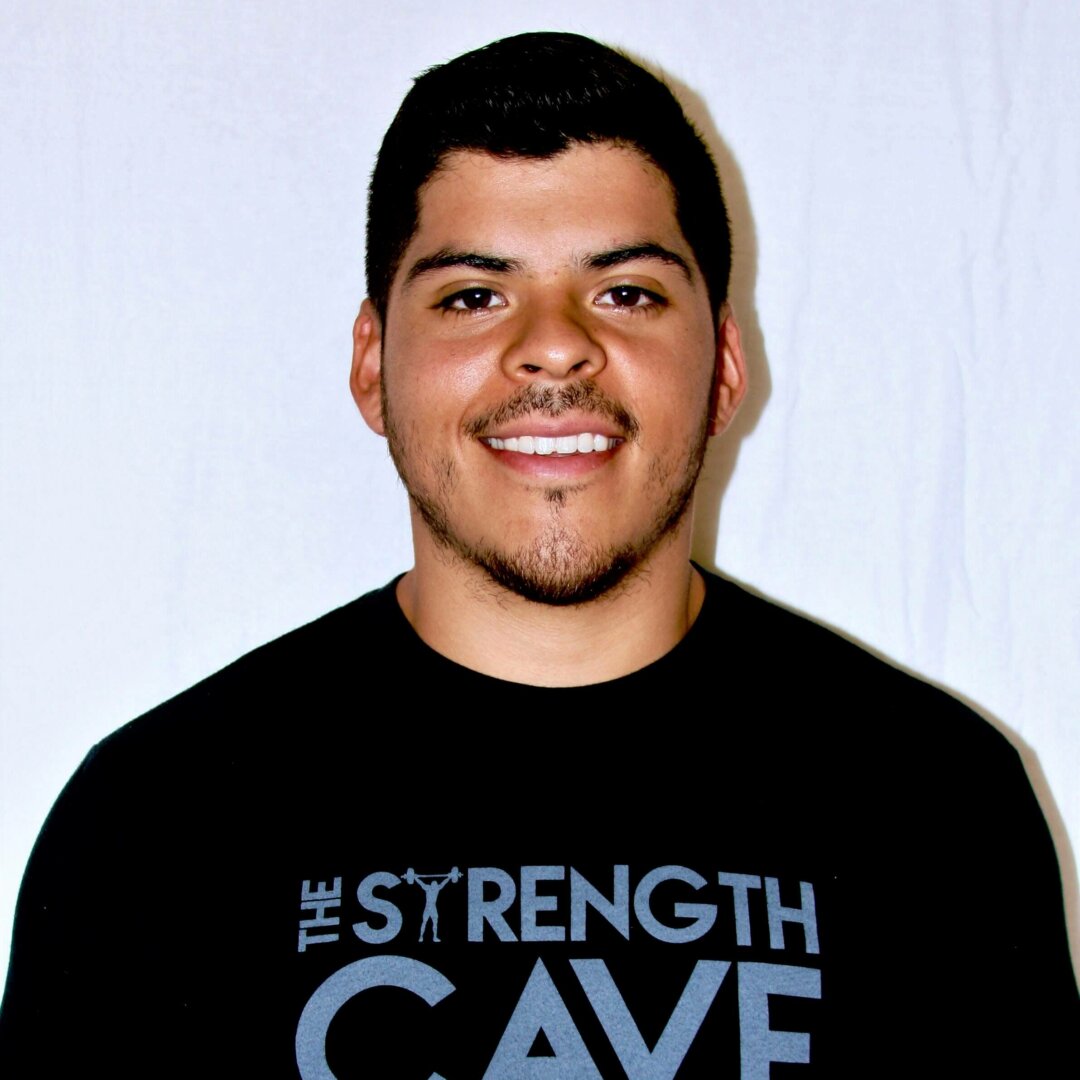Footwear has become a great topic of discussion as far as resistance training goes. This used to be reserved for the endurance training crowd as they tried to decide how much cushion or weight to put in their shoes. But now, serious lifters are quite concerned over the characteristics of their training shoes. Much of this concern has centered on the best type of shoe for compound movements. Specifically, many believe that movements with a squatting pattern require a special type of shoe for enhanced performance/efficiency.
Many shoe companies now sell training specific shoes, with some featuring a flat sole and others featuring a raised heel. These companies will of course give reasons as to why they chose to feature either a flat or raised heel, but despite their reasons, many people struggle with the decision of which type of shoe is best for them. Some people might tell you that a raised heel is always better for squatting. However, everyone has different characteristics and strengths which makes these blanket statements inappropriate for everyone. In reality, the best type of training shoe is dependent on each person’s individual characteristics. However, one thing for sure is that having the right training shoe can make a world of difference in your comfort, strength, and efficiency in the gym.
Why Have a Raised Heel?
Often times, people employ a “monkey see, monkey do” approach when choosing a training shoe. The majority of powerlifters and weightlifters wear a raised heel shoe in training/competition. Naturally, people assume they need to use a raised heel too based on what they see around them, but there are actually specific reasons you might want to use a raised heel, just as there are reasons you may want to think twice.
One of the major advantages to a raised heel is the artificial boost in ankle mobility it provides. The 1-2 inch heel provides just a bit more dorsiflexion throughout the lift. This is a big help for those whose ankle dorsiflexion limits them in a squatting pattern. Essentially, the heel allows you to stay more upright in a squat and derive more power from the quads. If you are someone who has strong legs, then a raised heel will probably help you as far as maximal strength goes. Some also claim the raised heel allows them to hit depth more easily, although this may not actually be the case depending on your structure. If you find yourself struggling with ankle mobility, or want to tap into your leg strength, raised heels may be great for you.
While there are distinct advantages to a raised heel, there are some drawbacks as well. Those with stronger hips will tend to overcorrect in a squat when the weight reaches near maximal loads. Rather than use the increased leg drive that the heel provides, they will shoot their knees back and transfer the load onto their low back and hips. This can cause some strain to the lower back and, over time, could sensitize the area to injury. Additionally, the raised heel can present a challenge as far as balance goes. Some people find that they tend to pitch forward when wearing a heeled shoe during training. This makes the lift more difficult as your body has to fight to keep the bar over the midfoot. Those with strong hips or balance issues may want to use caution in training with a raised heel.
Pros and Cons of Flat Shoes
Although raised heel shoes have gotten all the attention lately, flat shoes still have a strong foothold in the training world. You probably have seen quite a few people rocking the “Chuck Taylors” around your gym. However, other flat soled shoes such as wrestling shoes, deadlifting shoes, or even squatting specific flat soled shoes are popular choices among hardcore lifters. Just as we see with raised heels, flat soles offer some distinct advantages, but can also be disadvantageous depending on your individual characteristics.
Perhaps the main advantage to flat shoes is the increased traction and grip they provide. Companies often make the bottom of these shoes very “sticky,” which is great for staying in contact with the ground. Additionally, these shoes are often stitched in a way that allows you to “push out” against them for increased traction and power production. So, those who have good strength and proprioception in their feet will find these shoes quite favorable. Additionally, flat shoes are often better for those who tend to be hip dominant in their squats. You don’t get the dorsiflexion bias like you do with a raised heel, which allows you to sit back farther, keep a more vertical shin angle, and stay balanced more easily. Combine this with the increased grip and traction, and you can feel very comfortable in a wider stance squat where you “sit back” and “spread the floor” throughout the lift.
Those with particularly weak feet may find flat shoes a challenge to train with. If you can’t feel the ground well to begin with, then flat shoes won’t feel different than any other shoe. However, this would be indicative of a bigger issue that you should address through proper training so as to avoid issues such as plantar fasciitis. Many of the other disadvantages that come with flat shoes can be remedied. Using a flat shoe with “tight” ankles might lead to discomfort or difficulty in squatting to depth without compromising form. Likewise, those with a quad dominant squat might want avoid a flat shoe in order to tap into their strengths more easily.
Does This Only Matter for Serious Lifters?
Some of you might be unsure of whether this even matters for you. Maybe you aren’t a serious powerlifter or Olympic weightlifter, but even if you are a casual gym goer, it may be worth investing in the right type of shoe for you. Being aware of your weaknesses and playing to your strengths is important no matter what your goals are in your training, and if you want to build some strength and muscle, then maximizing your efforts with the correct training shoe is helpful.
You’ll often see gym goers training is running shoes or some other highly cushioned training shoes. This can wreak havoc on your ability to perform nearly any weight bearing exercise. These non-specific shoes often cause balance issues, dangerous compensatory patterns, or power/force production issues, which rob you of a better training experience. As such, a dedicated training shoe will help you to have more productive training and better results over time. Anything that can help you perform better is worth the investment, especially since this whole fitness thing should be a lifelong commitment.
Conclusion
Many people debate the usefulness of flat or raised heels in the gym. It is often assumed that raised heels are better simply because so many experienced lifters tend to use them. However, raised heels don’t necessarily mean better performance for everyone. It may be that most serious lifters simply have an ankle mobility issue. The raised heel corrects for that mobility and allows for a more efficient squat in this case. However, both raised and flat heels have their distinct advantages and disadvantages.
Heeled shoes help tremendously for those who have ankle issues or better quad strength in relation to hip strength. However, they can also present a challenge for some people as far as balance and safety are concerned. Flat shoes provide awesome traction, which makes hip dominant exercise much easier to perform, but they may be hard to use for those who have trouble with foot strength/proprioception.
One thing for sure is that nearly everyone can benefit from a dedicated training shoe. Just as we have running, basketball, and tennis specific shoes, training shoes can make a big difference. Improved biomechanics, balance, and power production are just some of the advantages to using the correct shoe. Over time, this can result in better results no matter what your goals are in fitness.

